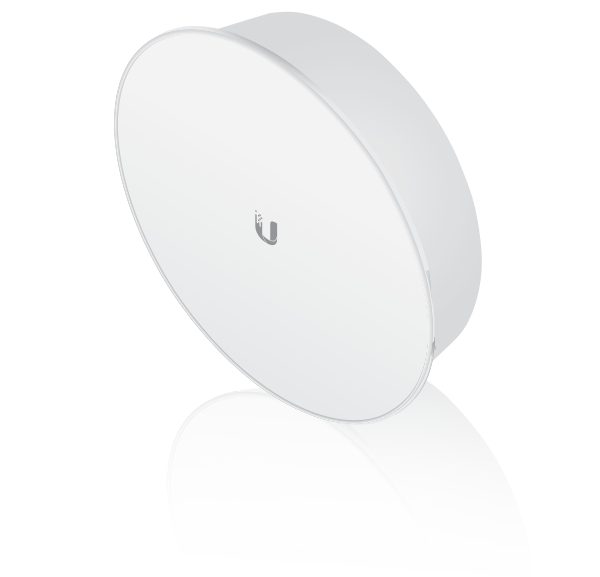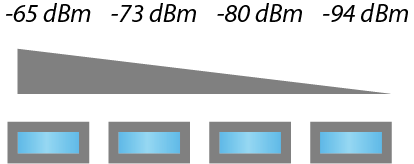Package Contents
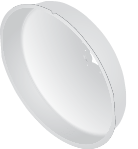 |
|---|
| Reflector |
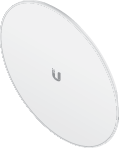 |
|---|
| Radome |
 |
|---|
| Antenna Feed |
 |
|---|
| Rear Housing |
 |
|---|
| Mounting Bracket |
 |
|---|
| Adjustment Bracket |
 |
|---|
| Hex Bolts with Washers (Qty. 4) |
 |
|---|
| Pole Clamp |
 |
|---|
| Carriage Bolts (Qty. 2) |
 |
|---|
| Flange Nuts (Qty. 2) |
 |
|---|
| Screws with Washers (Qty. 4) |
 |
|---|
| Washers (Qty. 4) |
 |
|---|
| Nylon Insert Lock Nuts (Qty. 4) |
 |
|---|
| Gigabit PoE (24V, 0.5A) with Mounting Bracket |
 |
|---|
| Power Cord |
Installation Requirements
- 13 mm wrench
- Shielded Category 5 (or above) cabling with drain wire should be used for all wired Ethernet connections and should be grounded through the AC ground of the PoE.
We recommend that you protect your networks from harmful outdoor environments and destructive ESD events with industrial-grade, shielded Ethernet cable from Ubiquiti. For more details, visit ui.com/toughcable
- Surge protection should be used for all outdoor installations. We recommend that you use two Ethernet Surge Protectors, model ETH-SP, one near the PowerBeam and the other at the entry point to the building. The ETH-SP will absorb power surges and safely discharge them into the ground.

Hardware Overview
Bottom View
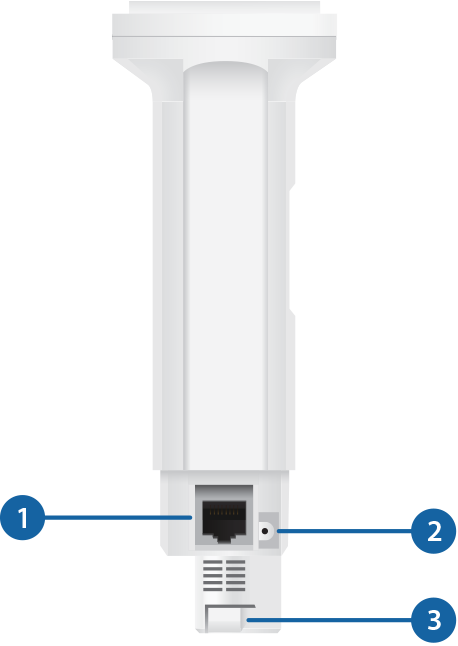

Ethernet |
|---|
This Gigabit Ethernet port is used to connect the power and should be connected to the LAN and DHCP server. |

Reset Button |
To reset to factory defaults, press and hold the Reset button for more than 10 seconds while the device is powered on. Alternatively, the device may be reset remotely via a Reset button located on the bottom of the Gigabit PoE Adapter. |

Release Button |
After you assemble the PowerBeam, check the Release button; it should be fully engaged in the Release Button Slot of the Rear Housing. This ensures that the Antenna Feed is locked into place. If you need to remove the Antenna Feed, you must depress the Release button first. |
LEDs
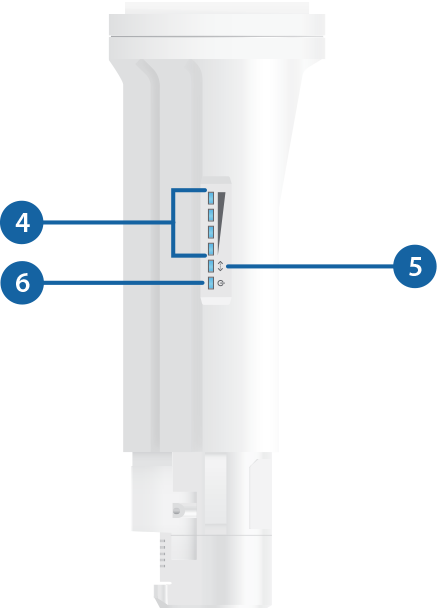
 Signal |
|---|
In airOS®, you can modify the threshold value for the wireless signal strength LEDs on the Wireless tab under Signal LED Thresholds. Each LED will light when the wireless signal strength is equal to or greater than the LED’s threshold value. The default threshold values for these LEDs are shown below:
|

Ethernet |
The Ethernet LED will light steady blue when an active Ethernet connection is made and flash when there is activity. |

Power |
The Power LED will light blue when the device is connected to a power source. |
Application Examples
The PowerBeam mounted outdoors with the Reflector installed provides directional outdoor coverage (gain is reflector-dependent).
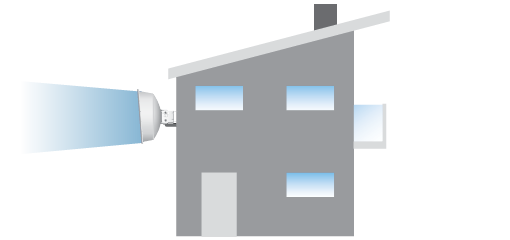
The PowerBeam mounted outdoors without the Reflector installed provides outdoor-to-indoor coverage using the 3 dBi Antenna Feed only.

Installation
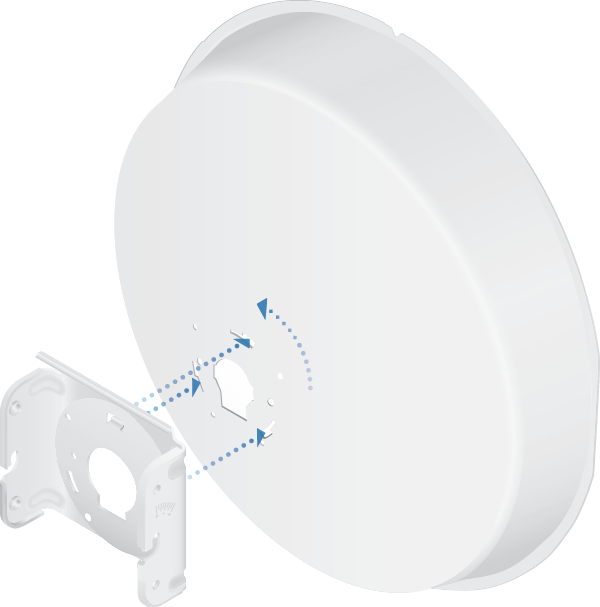
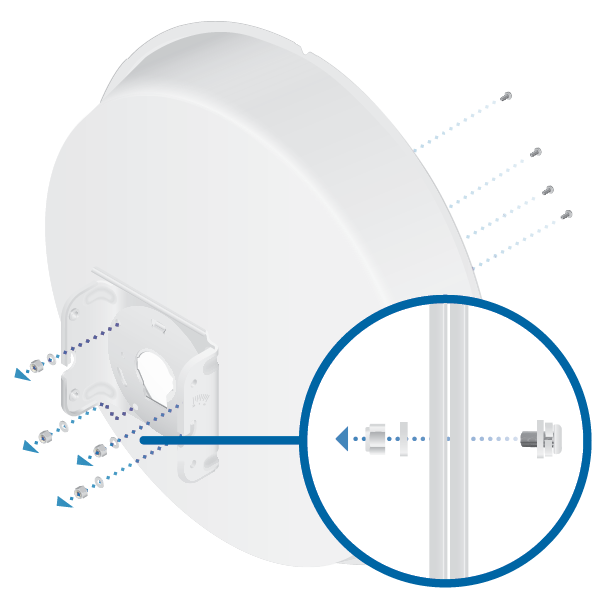
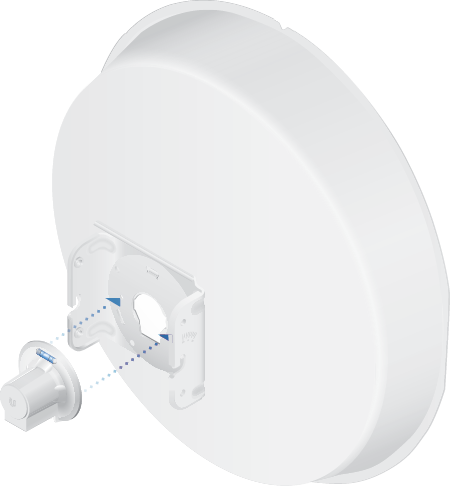

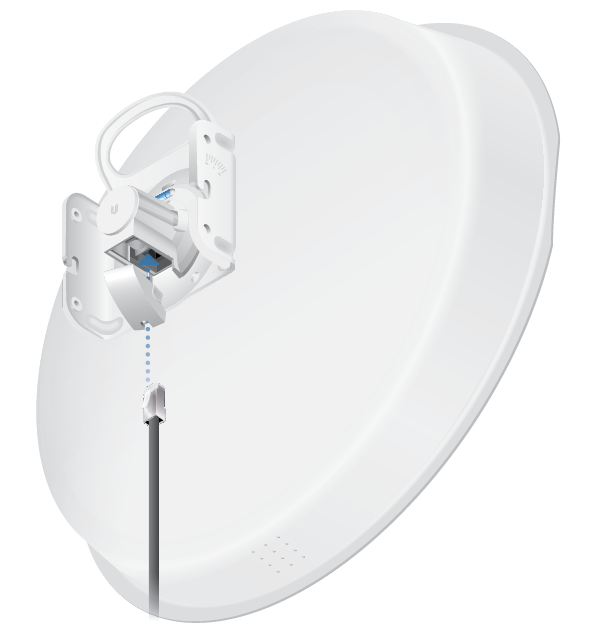
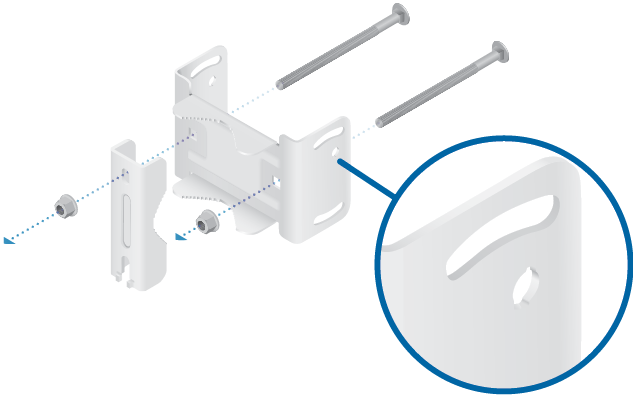
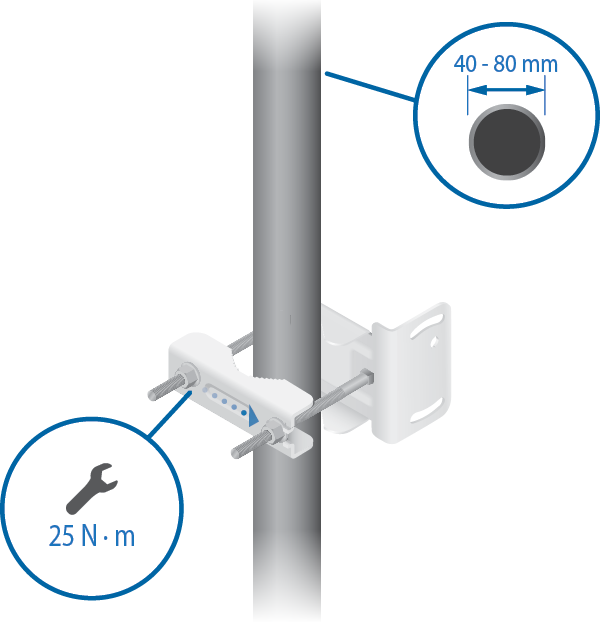
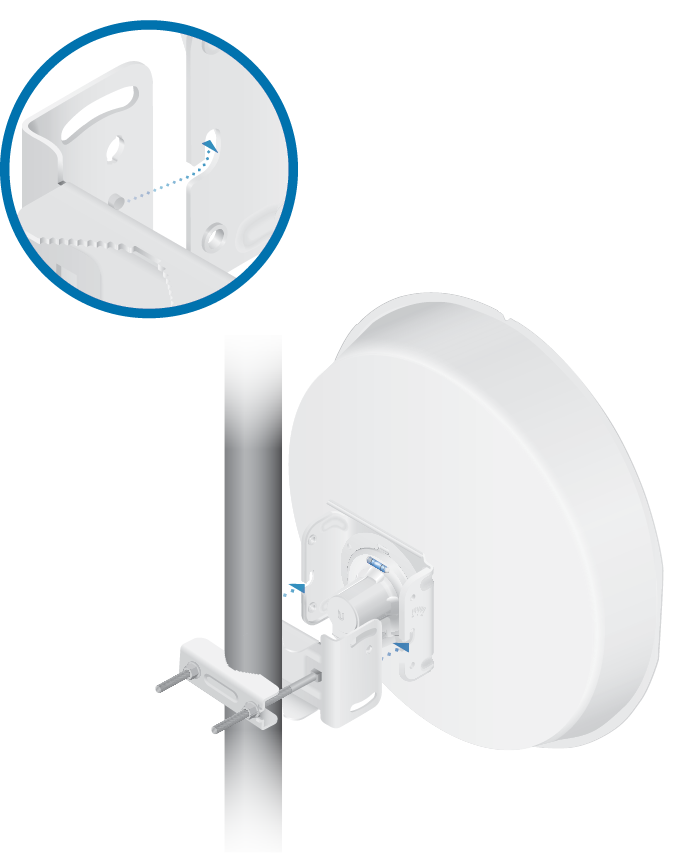
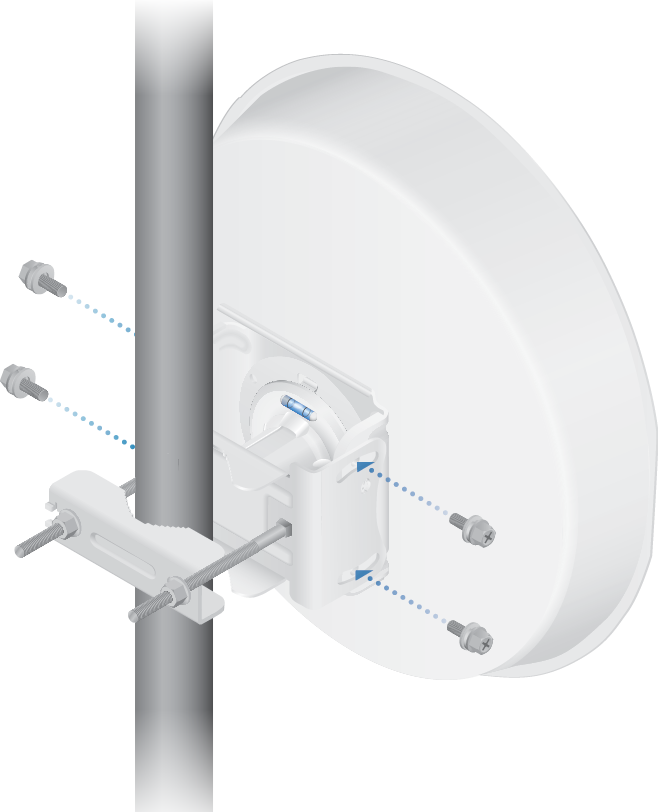
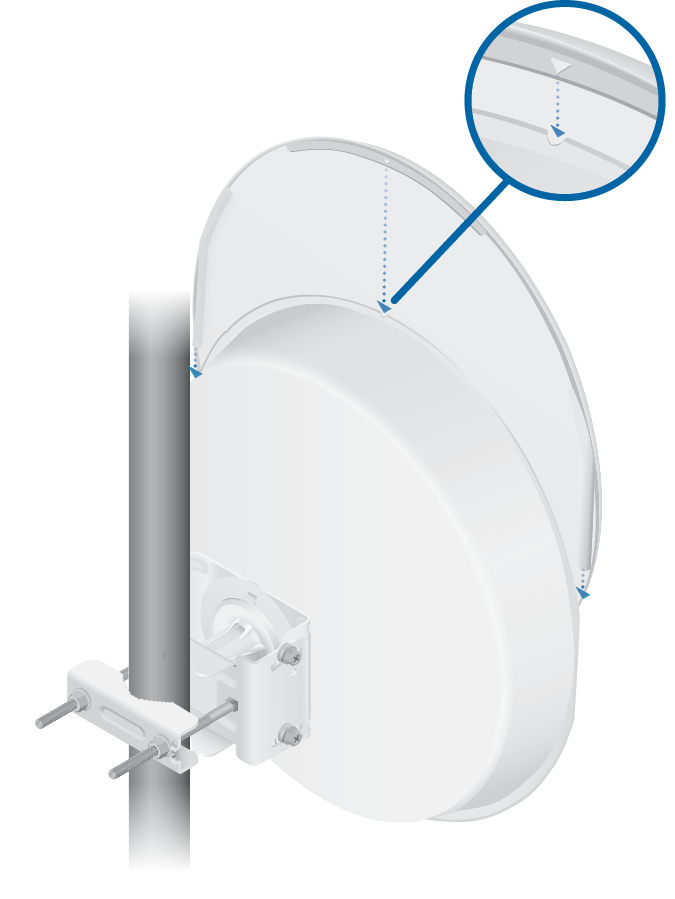
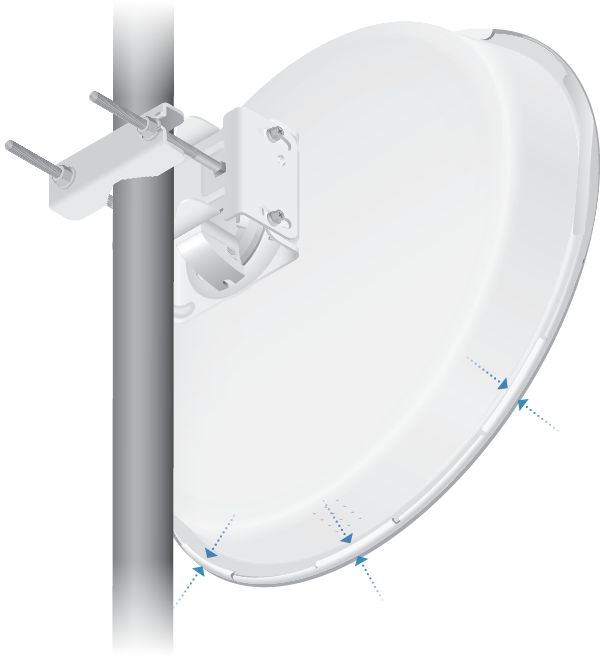
- Adjust the elevation angle.
- Loosen the four Hex Bolts on both sides of the antenna.
- Pivot the antenna until the Elevation Indicator shows the desired elevation angle.
- Tighten the four Hex Bolts.
- Connect the power using:
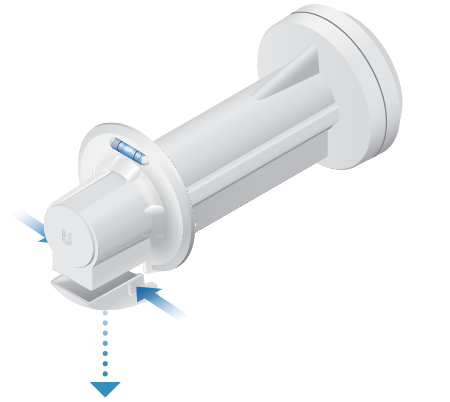
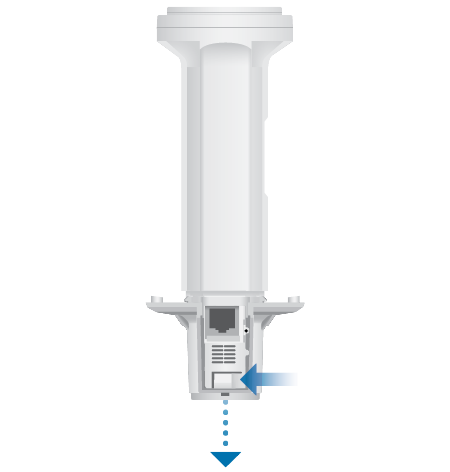
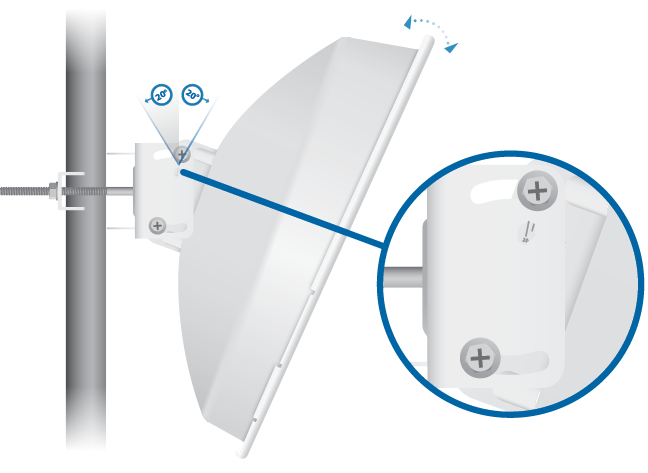
- included Gigabit PoE Adapter
- PoE switch
| WARNING: The switch port must comply with the power specifications listed in this Quick Start Guide. |
|---|

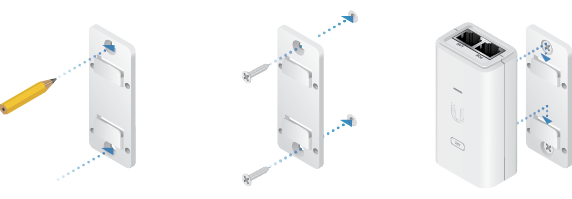
Accessing airOS via Wi-Fi
Installer Compliance Responsibility
Devices must be professionally installed and it is the professional installer’s responsibility to make sure the device is operated within local country regulatory requirements.
Antenna
Select your antenna from the list. If Calculate EIRP Limit is enabled, transmit output power is automatically adjusted to comply with the regulations of the applicable country. For a Custom antenna, Antenna Gain is entered manually. Note the requirements and antenna types listed below.
Cable Loss (When applicable)
Enter the cable loss in dB. Output power is adjusted to compensate for loss between the radio and the antenna.
Certified Antenna Types
This radio transmitter FCC ID: SWX-PBE5ACG2 / IC: 6545A-PBE5ACG2 has been approved by FCC / ISED Canada to operate with the antenna types listed below with the maximum permissible gain for each antenna type indicated. Antenna types not included in this list or having a gain greater than the maximum gain indicated for that type, are strictly prohibited for use with this device.
|
Antenna |
Frequency |
Gain |
|---|---|---|
|
Dish |
5 GHz |
25 dBi |
Specifications
|
PBE-5AC-ISO-Gen2 |
|
|
Dimensions (with Radome) |
459 x 459 x 261 mm (18.07 x 18.07 x 10.28") |
|---|---|
|
Weight (Mount Included) |
3.22 kg (7.10 lb) |
|
Gain |
25 dBi |
|
Networking Interface |
(1) 10/100/1000 Ethernet Port |
|
Enclosure |
Outdoor UV Stabilized Plastic |
|
Max. Power Consumption |
8.5W |
|
Power Supply |
24V, 0.5A Gigabit PoE Adapter (Included) |
|
Power Method |
Passive PoE (Pairs 4, 5+; 7, 8 Return) |
|
Wind Survivability |
200 km/h (125 mph) |
|
Wind Loading |
559 N @ 200 km/h (125.7 lbf @ 125 mph) |
|
Certifications |
CE, FCC, IC |
|
Mounting |
Pole Mounting Kit Included |
|
Operating Temperature |
-40 to 70° C (-40 to 158° F) |
|
Operating Humidity |
5 to 95% Noncondensing |
|
Shock and Vibrations |
ETSI300-019-1.4 |
|
Operating Frequency (MHz) |
||
|
Worldwide |
5150 - 5875 |
|
|---|---|---|
|
US/CA |
U-NII-1 |
5150 - 5250 |
|
U-NII-2A |
5250 - 5350 | |
|
U-NII-2C |
5470 - 5725 | |
|
U-NII-3 |
5725 - 5850 |
|
|
Management Radio (MHz) |
|
|
Worldwide |
2412 - 2472 |
|---|---|
|
US/CA |
2412 - 2462 |
